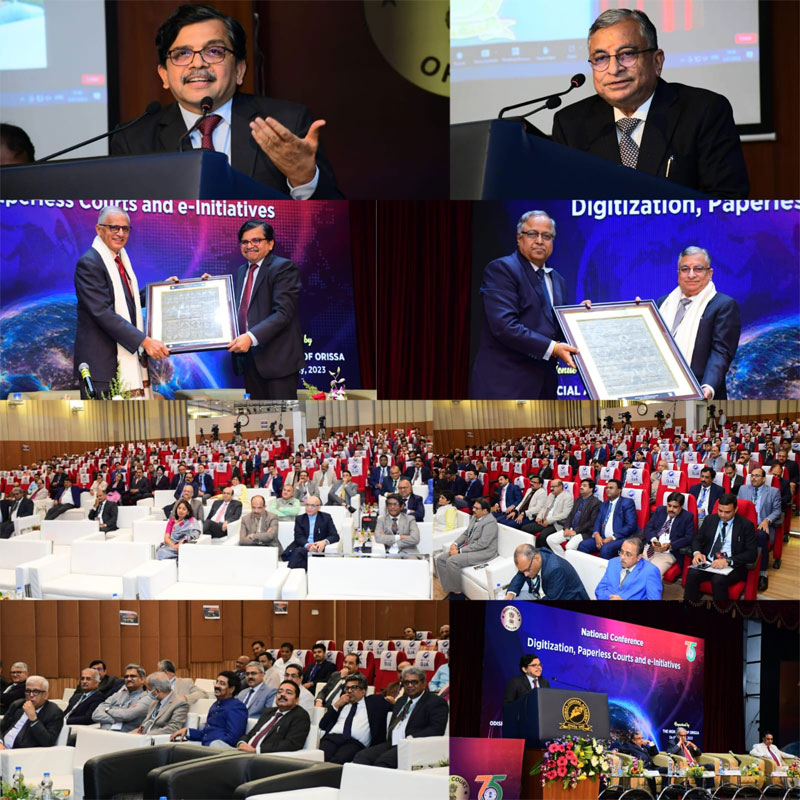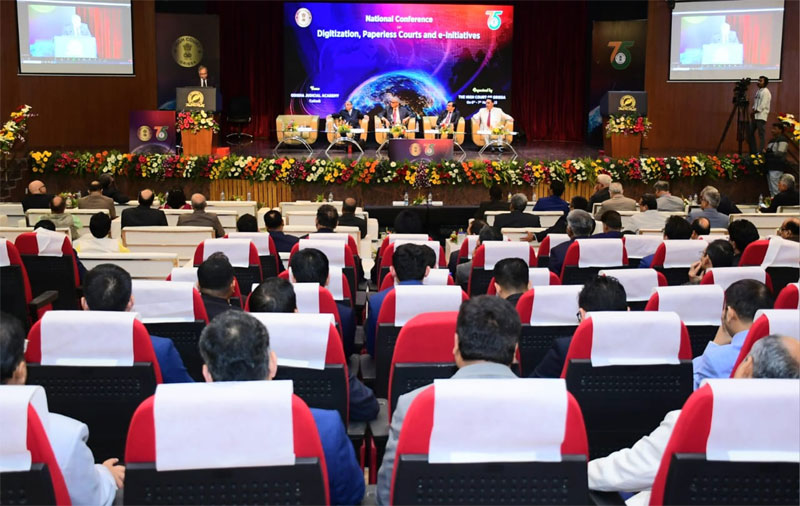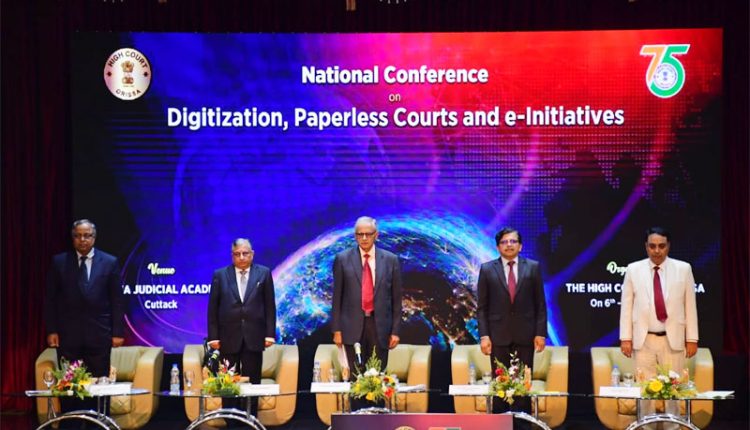Cuttack (Kalinga Voice) ; The two days National Conference on Digitization, Paperless Courts and e-Initiatives organized by the High Court of Orissa which was inaugurated on 6th May, 2023 by Dr. Justice Dhananjaya Y. Chandrachud, Chief Justice of India in the Odisha Judicial Academy, Cuttack was concluded on 7th May, 2023.
Judges and judicial officers from all the High Courts of the Country participated in the Conference and held a threadbare deliberation on the einitiatives of their High Courts, the challenges faced by them and the steps taken to overcome the challenges. The members of e-Committee, Supreme Court of India presented the action plan for Implementation of the Action Plan of Phase-III of e-Courts Project. The Secretary, Department of Justice, Government of India put forth the Government’s budgetary plan for the Phase-III of e-Courts Project.
The e-Courts Project is a mission mode project to ensure efficient & time-bound citizen centric services, installation of ICT support systems in courts, automation of processes for transparency and accessibility of information to stakeholders, enhancement of judicial productivity and make the justice delivery system affordable, accessible, cost effective, predictable, reliable and transparent. The project is funded by Government of India for the District Courts across the country. It was conceptualized on the basis of the “National Policy and Action Plan for Implementation of Information and Communication Technology (ICT) in the Indian Judiciary – 2005” submitted by e-Committee, Supreme Court of India with a vision to transform the Indian Judiciary by ICT enablement of Courts. The project began in 2007 and since its inception it has undergone two phases.
In Phase-I of the e-Courts Project beginning from 2007, computerization of District and Taluka Courts was taken up by setting up Server Rooms and installation of hardware and LAN. Case Information System (CIS) was launched for easy information of the lawyers and litigants about their cases. The Judicial Officers and court staff were trained. The data of all the cases were entered in the CIS. The Process Re- engineering exercise was initiated to have a fresh look on the process, procedures, systems and Court Rules in force in the District Courts. Task to connect Court Complexes with Jails for remands and production of under-trial prisoners through Video Conferencing was taken up. The Phase-I concluded on 30th March 2015.

Phase-II of the e-courts Project began in 2015 with an emphasis on capacity building of Judicial Officers and Process Re-Engineering. Service delivery to the litigants and lawyers was focused. Websites were launched to disseminate information in local languages and mobile phone applications, SMS and emails are used as platforms for dissemination of information.
Provisions were made for Kiosks, online certified copies of documents and ePayment gateways for making deposits, payment of court fees, fines etc. The National Judicial Data Grid (NJDG) was improvised to facilitate morequalitative information for Courts, Government and Public. Besides, ICT Initiatives like virtual hearing, live streaming, e-Filing, Paperless Courts, digitization of case records etc were taken up in Phase II which helped judiciary overcome the challenges caused by pandemic.
Now the e-Committee has formulated action plan for Phase III of the e Courts Project. There has been a budgetary outlay of Rs.7210 crores for Phase III for the period from 2023 to 2027.
While the deliberations on the first day of the conference were made in the presence of Dr. Justice D.Y. Chandrachud, Chief Justice of India and Justice Rajesh Bindal, Judge, Supreme Court of India, the second day witnessed productive discussions in the presence of Justice A.S. Bopanna and Justice Krishna Murari, Judges, Supreme Court of India.
Dr. Dinesh Katre, Senior Director & HOD, Scientist-G, Co-Mission, Director-Digital Preservation C-DAC urged all the High Courts to obtain ISO certifiction for their e-initiatives. Vivek Raghaban, Chief AI Evangelist, Bangalore explained about the SUVAS and BHASINI translation softwares and their utility in the translation of legal documents.
In the valedictory session of the conference Dr Justice B R Sarangi, Judge, High Court of Orissa complimented all the Judges and participants for successful completion of the conference.
Sharing his own experience Justice Krishna Murari, Judge, Supreme Court of India said age is never a bar for learning. He said though he has never been conversant with technology, he has started learning its use which has now become inevitable.
Justice A S Bopanna too said he started learning use of technology at a very late age and emphasized on the importance of virtual hearing. He added, every district court complex should have facility for virtual hearing.
Dr. Justice S Muralidhar, Chief Justice, High Court of Orissa said the conference has really been a forum for sharing the experiences and best practices. Stressing upon the importance of paperless courts Justice Muralidhar said the paperless regime has a positive impact on the courts’architecture. He added, in coming three months 100 more courts in the districts in Odisha will be made paperless. He discussed about the impact of social media on the working of judicial officers and said there is need to think as to how to deal with it. He emphasized on building a self reliant judiciary.

Justice Muralidhar summed up the key take-aways of the conference
thus:
- Judicial system needs to be more citizen-centric;
- Lawyers have to brought on board to effect complete transformation
of the system; - Security of data and its retrievability has to be ensured;
- Paperless functioning of courts has to be ensured;
- Judiciary has to be self reliant instead of depending on external agencies for ICT enabled functioning;
- Simplification of procedures and process reengineering has to be focused on.
The National Conference became a platform for the entire judiciary of the country to assess their performance in Phases I and II, share their best practices and challenges and prepare a roadmap for implementation of the action plan for Phase III.

